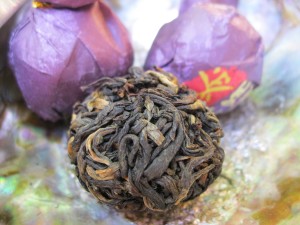Raw Pu erh vs Green Tea

Raw Pu erh vs Green Tea – The Differences and Similarities
Raw pu erh and green tea, though similar, have some differences that will be discussed below.
Differences
- Regional differences— Raw pu erh must come from Yunnan Province and the the Mekong River delta. Green tea can be cultivated just about anywhere. All of the five major regions of China produce green tea.
- Leaf-type— The regional standard established for pu erh tea requires that it be the Mekong River region broad-leaf variety of Camellia sinesis. Green tea includes small-, medium-, and large-leaf varieties. Additionally, the leaves used for green tea are fairly tender, with grading quite detailed, particularly for famous types like Dragon Well. This is not necessarily the case with pu erh. Small and tender leaves will certainly command a high price, but it doesn’t ensure a nice product.
- “Kill Green” differences— There are four types of “kill green” procedures with green tea: sun-dried, baked, fried, or steamed. By definition, pu erh is sun-dried.
-
Similarities
Fermentation— Green tea is not fermented. Raw pu erh is post-fermented over a long period of time. Fresh pu erh mao cha is quite similar to green tea. However, upon storage microbes and oxidation will begin the fermentation process. This is where raw pu erh parts ways with green tea.
- Aging— The fresher the green tea, the more valuable. Pu erh is exactly the opposite, the more aged being more valuable. The longer a green tea sits, the more bland it becomes. The broth changes from a light green to a muted yellow along with more murkiness, astringency and bitterness. The older a pu erh the more intense its flavor. Astringency transforms into a fullness and bitterness transforms into sweetness. Given the explosion in the prices of pu erh, many shops have taken to pressing green tea into cakes, but they will never transform into anything of value.
Primary Similarity between raw pu erh and green tea
Though raw pu erh and green tea are similar, raw pu erh possesses some unique features. Primary among them is aging and fermentation. Green tea is valued for its freshness. Raw pu erh, though increasingly enjoyed fresh, is still most prized aged. Aging goes hand in hand with fermentation. The degree to which age and microbes act on raw pu erh depends on storage conditions, something discussed in other blogs.
